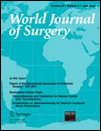Prognostic Factors for Recurrence of Papillary Thyroid Carcinoma in the Lymph Nodes, Lung, and Bone: Analysis of 5,768 Patients with Average 10-year Follow-up
Abstract
Background
Papillary thyroid carcinoma (PTC) frequently recurs to the lymph nodes, which may not be fatal immediately but is a stressor for physicians and patients. Recurrence to the distant organs, although less frequent, is often life-threatening, and the lung and bone are organs to which PTC is likely to recur. In the present study we investigated factors predicting recurrence of PTC to the lymph nodes, lung, and bone in a large number of patients undergoing long-term follow-up.
Methods
A total of 5,768 PTC patients (608 males and 5,159 females) without distant metastasis at diagnosis who underwent initial surgery between 1987 and 2004 in Kuma Hospital were enrolled in this study. The postoperative follow-up ranged from 12 to 280 months, and was 129 months (10.8 years) on average.
Results
To date, node, lung, and bone recurrences have been detected in 389 (7%), 118 (2%), and 33 patients (0.6%), respectively, and 57 patients (1%) have died of PTC. We examined the prognostic significance of the tumor size (T), extrathyroid extension (Ex), age 55 years or older (Age), male gender (Gender), clinical node metastasis (N), and extranodal tumor extension (LN-Ex) for each outcome on multivariate analysis. Age, Gender, T > 2 cm, N, and Ex were independent predictors of lymph node recurrence. Age, Ex, T > 2 cm, and N were independent prognostic factors for lung recurrence. Ex, T > 4 cm, and N independently predicted bone recurrence. Of these, N ≥ 3 cm had the strongest prognostic value for lymph node, lung, and bone recurrences. In contrast, Age was the strongest predictor for carcinoma death. LN-Ex also had a prognostic value for carcinoma death, although it was not a predictor of carcinoma recurrence. Ex, N ≥ 3 cm, and T > 2 cm also had a prognostic impact on carcinoma death.
Conclusions
Large lymph node metastasis showed a strong prognostic impact on carcinoma recurrence not only to the lymph nodes but also to the lung and bone, and carcinoma death. Extrathyroid extension also independently predicted these recurrences and carcinoma death, although hazard ratios were lower than for large node metastasis. Age 55 years or older, in contrast, was the strongest predictor of carcinoma death. Extranodal tumor extension did not independently affect recurrence, but it had prognostic significance for carcinoma death. These findings suggest that recurring PTC lesions of older patients and/or extranodal tumor extensions are difficult to control and very progressive.




